Thanks Marc. As always an informed and informative response.
On this day during W.W. 2
-
@captainwalker that must have been a hell of a treat for the spectators.
-
It was 80 years ago today, that a Japanese carrier strike force, the “Kido Butai,” consisting of six aircraft carriers (Akagi, Kaga, Sōryū, Hiryū, Shōkaku, and Zuikaku), assorted escorts, and five submarines with Type A midget submarines embarked, departed Hittokapu Bay on Kasatka (now Iterup) Island in the Kuril Islands. They were headed to a position northwest of Hawaii, intending to launch an attack on Pearl Harbor.

-
28 November 1941: the BIG E leaves Pearl Harbor
Today, 80 years ago…USS Enterprise (CV 6) sails from Pearl Harbor for Wake Island to ferry Marine aircraft to the island. A delay due to weather on her return trip, the “BIG E” would not be at Pearl Harbor as scheduled on 6 December leaving no carriers left during the Japanese attack on 7 December.
This luck would hinder the Japanese for the rest of the war as USS Enterprise would become the most decorated WW2 ship in United States Naval History and fight the Japanese in just about every major engagement in the Pacific.
On three occasions during the war, the Japanese announced that she had been sunk in battle, inspiring her nickname “The Grey Ghost”. By the end of the war, her planes and guns had downed 911 enemy planes, sunk 71 ships, and damaged or destroyed 192 more. She is the one and only BIG E.

-
@captainwalker excellent post; thanks.
-
@captainwalker Great information and great post! Makes my heart go all a flutter!
-
Pearl Harbor plus 80 countdown:
2 December 1941
Admiral Isoroku Yamamoto, aboard Japanese battleship Nagato in Tokyo Bay (photo), signals Admiral Nagumo in command of Japan’s main carrier battle group, the Kido Butai, to proceed with the attack on Pearl Harbor for 7 December. The official command has now been set.
The Japanese carrier strike force is proceeding east toward the United States on a course that is well to the north of established trade routes. This force is a third of the way toward Hawaii and operating in complete secrecy.
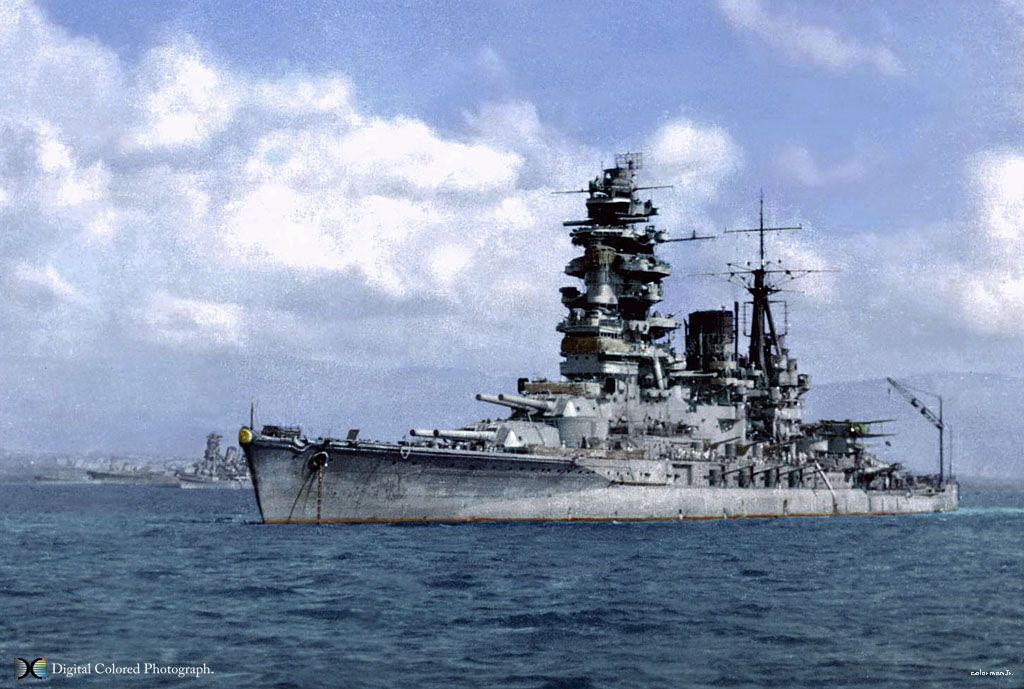
-
4 December 1941
With the USS Enterprise CV-6 (The Big E) on the way to Wake Island, it leaves only USS Lexington CV-2 (Lady Lex) at Pearl Harbor with the Japanese closing in for the attack.
Back on the West Coast, USS Saratoga CV-3 (photo) has completed her overhaul at the Bremerton Navy Yard, WA and is underway to San Diego, CA to pick up her air wing and ready for return to service. Thankfully, she would not be at Pearl Harbor on 7 December but would arrive there on 15 December to begin combat operations against the Japanese.
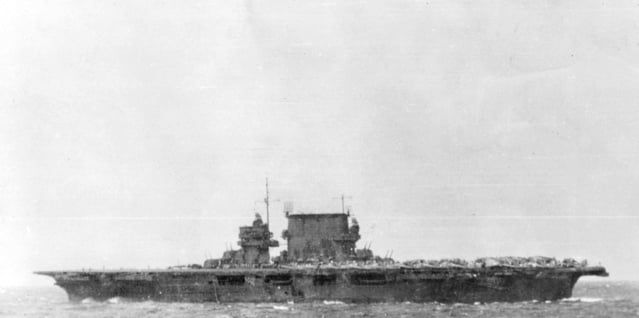
-
5 December 1941
USS Lexington CV-2 (Lady Lex) sails with Task Force 12 at 0810 to ferry Marine aircraft to Midway, leaving no carriers at Pearl Harbor much to the dismay of the Japanese. A spy reports this information and it reached the Japanese Task Force but they decide it is too late to stop now. The battleships will have to do.
At 1130, the Japanese oilers refuel the carrier group and stand by letting the attacking group go on without them. Some 27 Japanese submarines are in the Hawaii area already.
At 1500, destroyer USS Ralph Talbot DD-390 picks up a sonar contact five miles off Pearl Harbor. Knowing US submarines are not in the area, her Captain asks for permission to fire depth charges. the squadron commander refuses stating it must be a fish…
Images: Rare photo of USS Lexington (CV-2), flagship of Task Force 12, underway in December 1941. LIFE magazine, Bob Landry photographer, shared by Peter DeForest.
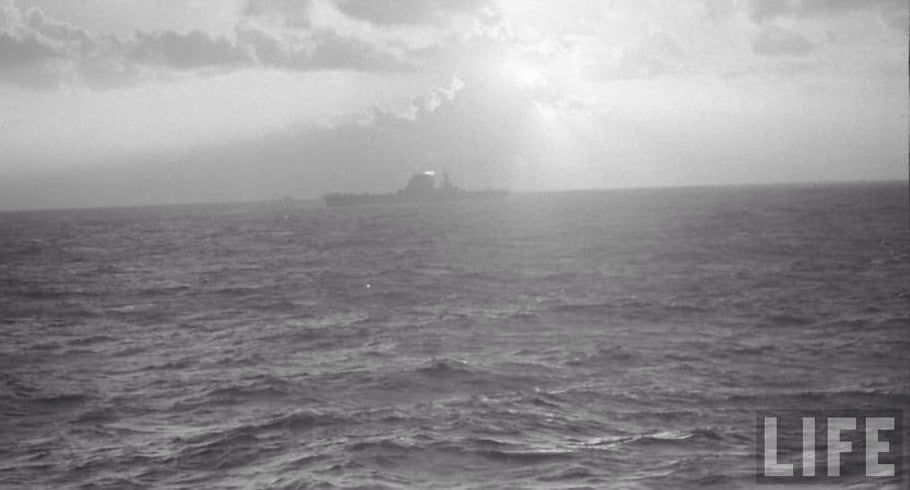
-
6 December 1941
President Roosevelt wrote a personal appeal to Emperor Hirohito to avoid war between the United States and Japan. “Developments are occurring in the Pacific area which threaten to deprive each of our Nations and all humanity of the beneficial influence of the long peace between our two countries.” the president wrote. “Those developments contain tragic possibilities … I address myself to Your Majesty at this moment in the fervent hope that Your Majesty may, as I am doing, give thought in this definite emergency to ways of dispelling the dark clouds. I am confident that both of us, for the sake of the peoples not only of our own great countries but for the sake of humanity in neighboring territories, have a sacred duty to restore traditional amity and prevent further death and destruction in the world.”
At this time, a message to a Japanese delegation in Washington D.C. was intercepted, broken and distributed by the Signal Intelligence Service. This message, which would become known as the Fourteen Point Letter, clearly spelled out the Japanese claims that America was trespassing in the Far East. President Roosevelt, after reading the first 13 parts at 9:30 p.m., commented that this meant war.
The Japanese fleet ends the day (east coast time) roughly 600 miles north of Oahu and the plan is to launch aircraft very very early on 7 December about 200 miles from it.
Battleship USS Arizona BB-39 took on a full load of fuel , nearly 1.5 million gallons, in preparation for a scheduled trip to the mainland later in December.
The 14th part of the Fourteen Point letter began to arrive at 5 a.m. on Dec. 7, 1941 as the Japanese embassy had trouble translating it to English quickly. The letter declared in a single sentence that Japan was breaking off relations with the United States, and that the U.S. Secretary of State should be notified at 1p.m. EST – dawn, in Hawaii. The president was informed immediately.
Gen. George Marshall, chief of staff of the Army, decided to alert the commanders of both the Hawaiian and Philippine department that the potential for attack was high. However, because of the sensitivity of the message, it was sent by telegraph. It wasn’t delivered to the ground commander in Hawaii until the Japanese bombers were flying through the morning fog over Pearl Harbor.
Images:
Aircraft Carrier Akagi, battleship Hiei, and battleship Kirishima on their way to Hawaii for the Pearl Harbor Strike;
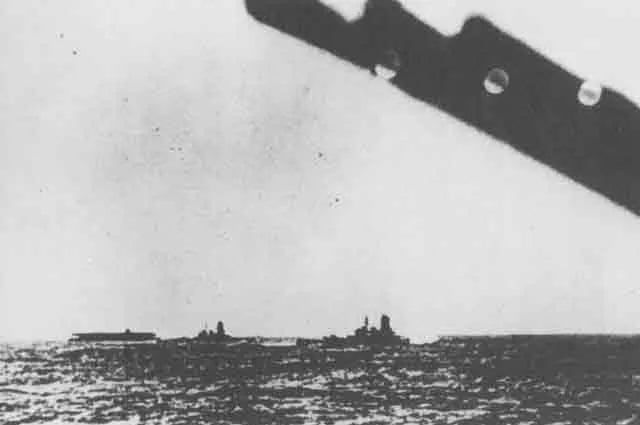
-
@captainwalker so sad. All those sailors burning and drowning. Shouldn’t have happened.
Wish they woulda dropped 10 A-Bombs on em
-
7 December 1941
Pearl Harbor was attacked by 353 Imperial Japanese aircraft in two waves, launched from six aircraft carriers. Of the eight U.S. Navy battleships present, all were damaged, with four sunk. The Japanese also sank or damaged three cruisers, three destroyers, an anti-aircraft training ship (USS Utah), and one minelayer. A total of 188 U.S. aircraft were destroyed; 2,403 Americans were killed and 1,178 others were wounded.
The Japanese third wave was cancelled due to caution and the repair facilities, shipyard, fleet refueling station, submarines and their docks, and logistics areas would be untouched for the most part. This would allow the US Navy to bounce back very quickly from this sneak attack.
The Cry “Remember Pearl Harbor” begins to be heard from shore to shore and the buildup American had started now is expedited with an instant resolve.
The United States is officially at War.
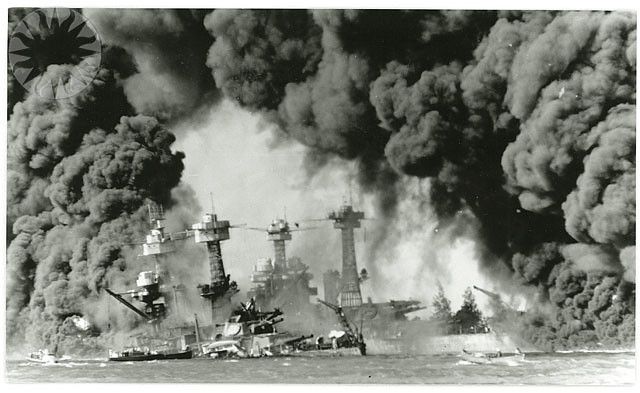
-
Nakajima B5N2 attack bomber taking off from the Japanese Imperial Navy aircraft carrier ‘Akagi’, on the second attack wave on Pearl Harbor on Sunday 7 December 1941
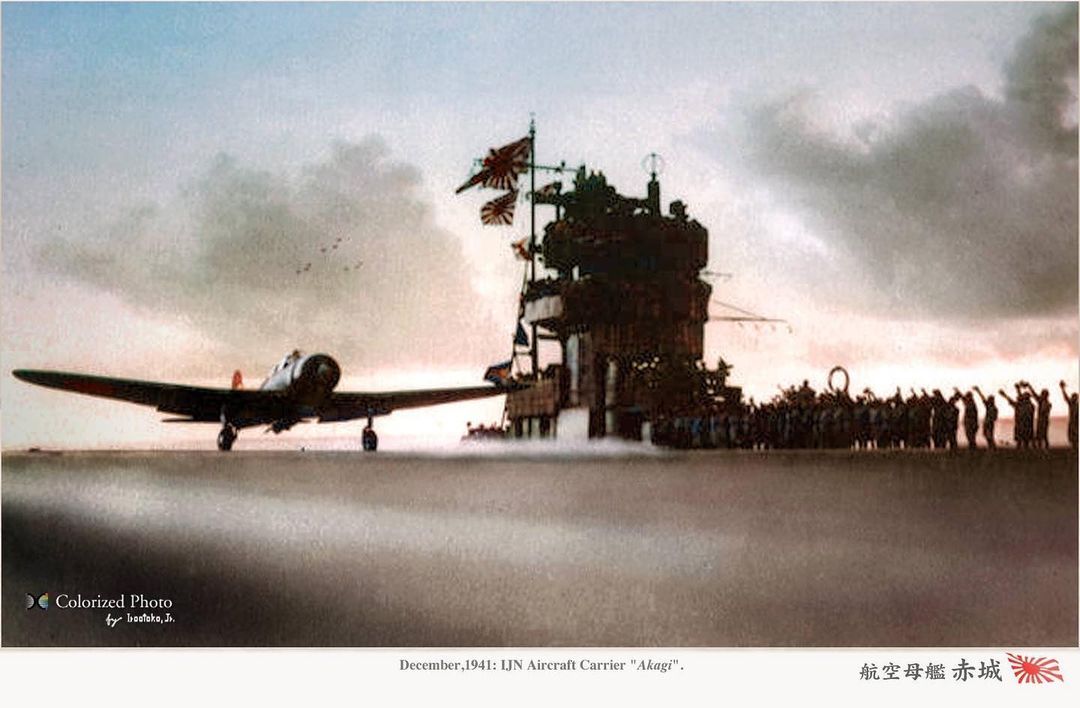
-
Japanese troops attacking Hong Kong from Shenzhen, China. 8th December 1941

-
@captainwalker Flag woulda made a nice target for a drone strike. Oh well
-
10 December 1941:
Two SBD aircraft from USS Enterprise CV-6 (The Big E) attack and sink the Japanese submarine I-70 north of Hawaiian Islands. A participant in the Pearl Harbor attack, I-70 is the first major Japanese combatant ship sunk during World War II.
I-70 was part of a group of submarines sent to patrol off the coast of the Hawaiian Islands during the attack on Pearl Harbor on December 7, 1941. That day, it failed to answer a radio call. The last radio received from the submarine was on December 9, 1941 when it reported seeing USS Enterprise near Naval Station Pearl Harbor.
On December 10, 1941, it was sighted by a Douglas SBD-2 Dauntless aircraft from USS Enterprise from VS-6 after 6:00 AM. The aircraft scored a near-miss with a 1,000-pound bomb which damaged its hull and prevented it from diving. Later that day, another SBD of VS-6 saw the damaged submarine. Although the submarine attempted to maneuver and was even able to fire its 13 mm deck machine gun, the SBD was able to climb to 5,000 feet and hit the ship amidships with a bomb, blowing several gunners overboard. The sub stopped and then disappeared underwater about 45 seconds later.
The famous BIG E strikes back first…
Image: US Navy photo. Douglas SBD-2 Dauntless scout bombers, of Scouting Squadron Six (VS-6). Composite photograph of 9 planes in flight, with USS Enterprise (CV-6) and a plane guard destroyer below. The original photo is dated 27 October 1941. Note differences in ocean surface wave patterns between the upper and lower images, skillfully blended to combine the two photographs. (Nasvource)

-
This post is deleted! -
USS Nevada BB-36 beached near Hospital point in Pearl Harbor after the Japanese attack - December 13, 1941 - 80 years ago today
LIFE Magazine Archives - Bob Landry Photographer
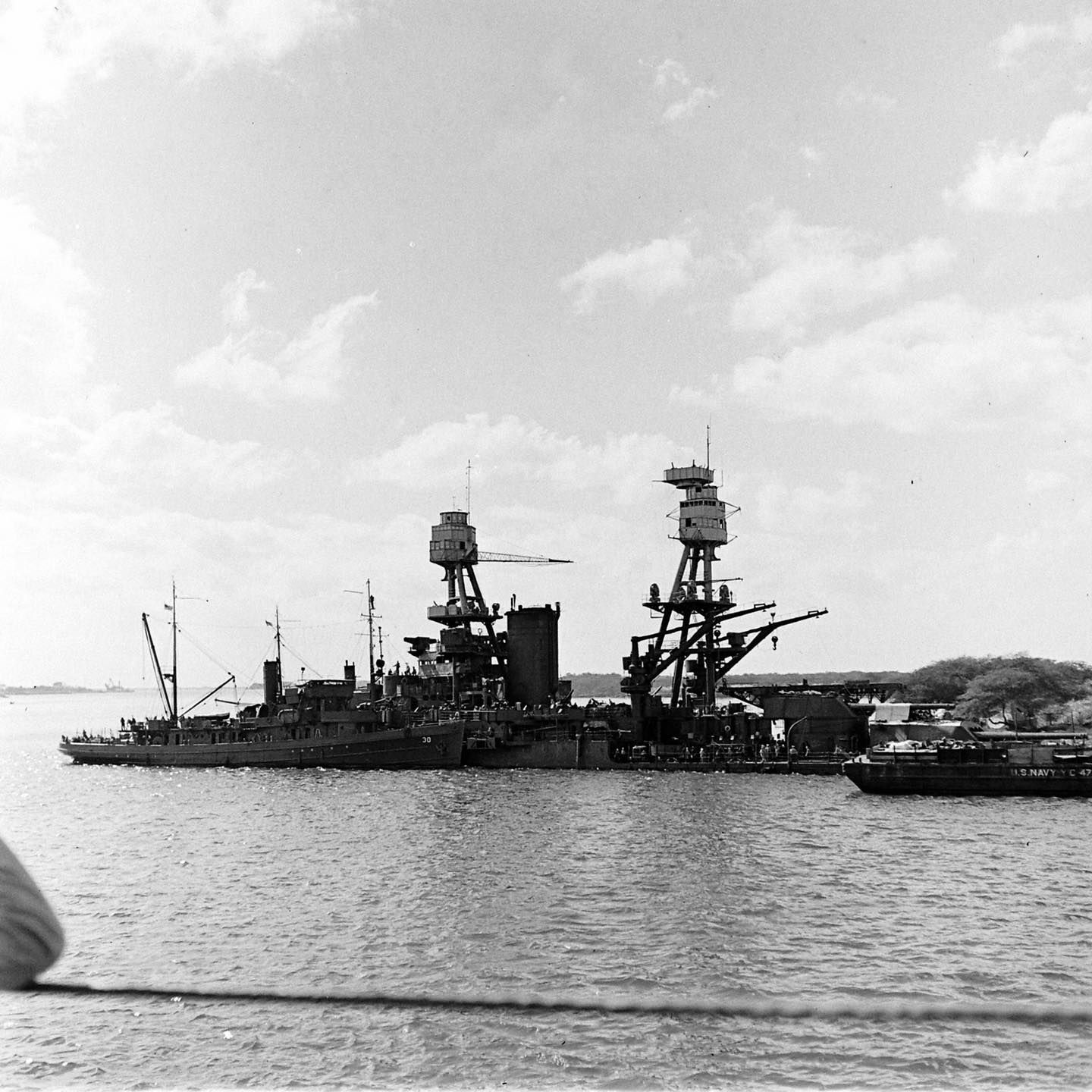
-
Pictures taken on Hospital point in Pearl Harbor after the Japanese attack - December 13, 1941 - 80 years ago today
LIFE Magazine Archives - Bob Landry Photographer
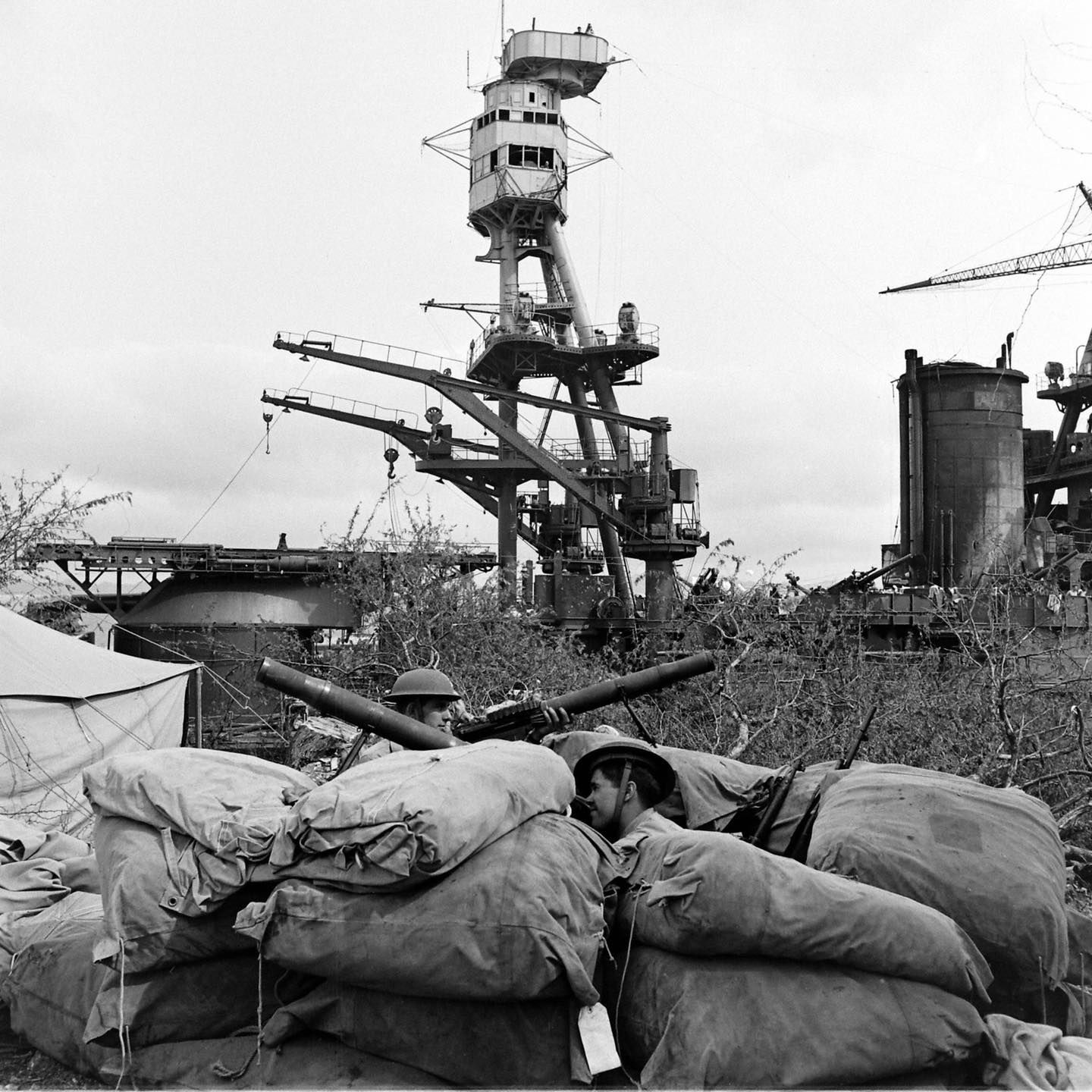
-
This post is deleted! -
US forces in Malmedy Belgium during the opening days of the German Offensive during the Battle of the Bulge - December 1944
LIFE Magazine Archives - John Florea Photographer







